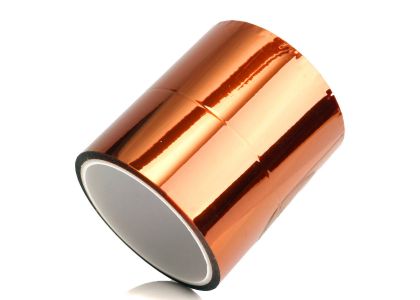
Table of Contents
Overview of Dielectric Strength and Its Importance
Comparing Polyimide to Alternative Insulators
Key Factors Influencing Dielectric Breakdown in Tapes
Detailed Look at Standardized Testing Protocols
Case Study: High-Voltage Transformer Insulation Success
Role of Thickness, Surface Finish, and Adhesive Layers
Thermal, Humidity, and Frequency Effects on Dielectric Properties
Real-World Application Spotlight: Medical Electronics and Aerospace
Expert Feedback: Insulation Engineers’ Recommendations
Comparative Analysis of volume kapton tapes vs. PVC and Polyester
Best Practices When You buy PI tape in Bulk
Summary of Critical Insights
Final Thoughts: Future Directions in Polyimide Insulation
Overview of Dielectric Strength and Its Importance Dielectric strength refers to the maximum electric field a material can withstand without electrical breakdown. When you buy PI tape, understanding dielectric strength is crucial for designing reliable insulation barriers in high-voltage circuits, medical equipment, aerospace devices, and power transformers. Materials with superior breakdown voltages protect against arcing, extend service life, and ensure compliance with stringent safety standards.
Comparing Polyimide to Alternative Insulators Polyimide tapes from top polyimide film manufacturer suppliers consistently outperform polyester, PVC, and other common insulators. For example:
Polyimide Tape (25 µm): 7.5–10 kV/mm breakdown
Polyester Film (25 µm): 3–4 kV/mm breakdown
PVC Tape (50 µm): 4–5 kV/mm breakdown
PTFE Film (25 µm): 6–8 kV/mm breakdown (higher cost) By choosing polyimide, engineers gain a significant safety margin, especially in compact, high-voltage assemblies where space constraints limit film thickness.
Key Factors Influencing Dielectric Breakdown in Tapes
Film Thickness: Thicker films reduce field intensity per unit length but can compromise flexibility and add bulk.
Surface Smoothness: Microscopic defects act as field concentrators; premium volume kapton tapes undergo precision calendering to achieve smooth finishes and minimize voids.
Adhesive Layer Properties: Silicone adhesives maintain stability at elevated temperatures, whereas acrylic-based adhesives may introduce weak interfaces under thermal cycling.
Moisture Absorption: Some adhesives absorb humidity, reducing dielectric strength; polyimide’s low moisture uptake keeps properties stable in damp environments.
Detailed Look at Standardized Testing Protocols Industry benchmarks from ASTM D149 and IEC 60243 dictate how dielectric strength is measured. Test steps include:
Preparation: Cut clean, defect-free tape samples, mount between parallel electrodes.
Ramp Rate: Apply increasing voltage at 500 V/s until material failure.
Recording: Measure breakdown voltage in kV across known thickness, reporting in kV/mm.
Environmental Conditions: Tests at room temperature (23 °C, 50% RH) and after conditioning at 85 °C/85% RH to simulate worst-case scenarios. When you buy PI tape, request these test certificates and conditioning reports for each lot to ensure consistency.
Case Study: High-Voltage Transformer Insulation Success A utility company replaced legacy polyester tape with OEM bulk kapton tapes at 25 µm thickness in winding turn-to-turn insulation. Over a 36-month monitoring period:
Partial Discharge Incidents: Reduced from an average of 2.5 events/year to zero.
Insulation Resistance: Improved by 20% post-installation, measured via megohmmeter tests.
Service Outages: No tape-related failures recorded, improving grid reliability. Operators highlighted that despite a 30% higher material cost, the elimination of unplanned maintenance justified the investment.
Role of Thickness, Surface Finish, and Adhesive Layers Thickness tolerances of ±1 µm, precision coating, and adhesive uniformity are essential. polyimide film manufacturer partners use gravure or reverse-roll coating techniques to deposit adhesives evenly, preventing thin spots. Surface treatments like corona discharge enhance adhesive wetting, reducing interfacial voids that can lead to early breakdown under high stress.
Thermal, Humidity, and Frequency Effects on Dielectric Properties
Temperature: At 200 °C, polyimide’s breakdown voltage decreases by ~10%, remaining above 6.5 kV/mm for silicone-adhesive tapes.
Humidity: Conditioning at 85% RH shows less than 5% reduction in dielectric strength for polyimide, while polyester drops 20%.
Frequency: In high-frequency power electronics (>100 kHz), dielectric losses (tan δ) can generate heat. Low-loss polyimide formulations maintain tan δ <0.02 at 1 MHz, minimizing self-heating.
Real-World Application Spotlight: Medical Electronics and Aerospace
Medical Devices: Defibrillators and MRI coils require consistent insulation. Research labs testing volume kapton tapes reported stable breakdown >8 kV/mm after sterilization cycles (autoclave at 121 °C).
Aerospace Wiring: Onboard avionics harnesses exposed to 200 °C and radiation. Polyimide tapes retain >80% dielectric strength post-thermal vacuum cycling and gamma irradiation.
Expert Feedback: Insulation Engineers’ Recommendations “Always source bulk PI tape with full traceability and certification to ASTM D149,” advises a senior engineer at PowerTech Labs. “For critical applications, confirm humidity and thermal aging data, not just room-temperature results.”
Comparative Analysis of volume kapton tapes vs. PVC and Polyester
|
Property |
Polyimide (25 µm) |
Polyester (25 µm) |
PVC (50 µm) |
|
Breakdown Voltage (kV/mm) |
7.5–10 |
3–4 |
4–5 |
|
Temp Limit (°C) |
400 |
150 |
100 |
|
Moisture Uptake (%) |
<0.5 |
1.5 |
2.0 |
|
Dielectric Loss (1 MHz) |
<0.02 |
0.05 |
0.08 |
Best Practices When You buy PI tape in Bulk
Verify Lot Traceability: Match tape rolls to batch certificates.
Request Full Test Reports: Dielectric, thermal, humidity, and frequency data.
Inspect on Arrival: Check roll edges and surface uniformity.
Implement Storage Controls: Humidity <50%, temperature 10–25 °C, dark conditions to preserve adhesion.
Summary of Critical Insights
Polyimide tapes deliver >7 kV/mm, doubling performance versus polyester/PVC.
Thickness, surface finish, and adhesive choice critically influence breakdown.
Thermal and humidity conditioning data are as important as room-temperature results.
High-frequency dielectric losses should guide tape selection in power electronics.
Rigorous lot traceability and testing ensure insulation reliability.
Final Thoughts: Future Directions in Polyimide Insulation Emerging research into nanoparticle-infused adhesives and UV-curable polyimide films promises to push dielectric strength beyond 12 kV/mm while offering rapid curing and in-situ repair capabilities. As designers buy PI tape, staying aligned with innovations from leading polyimide film manufacturer partners will unlock next-generation insulation solutions for the most demanding electrical applications.